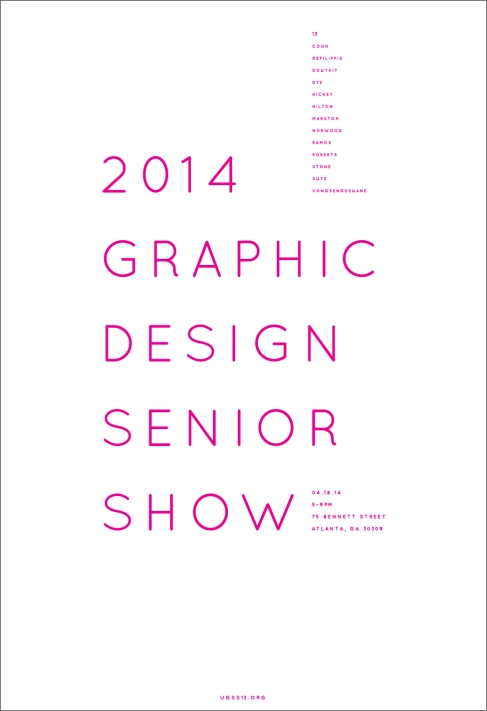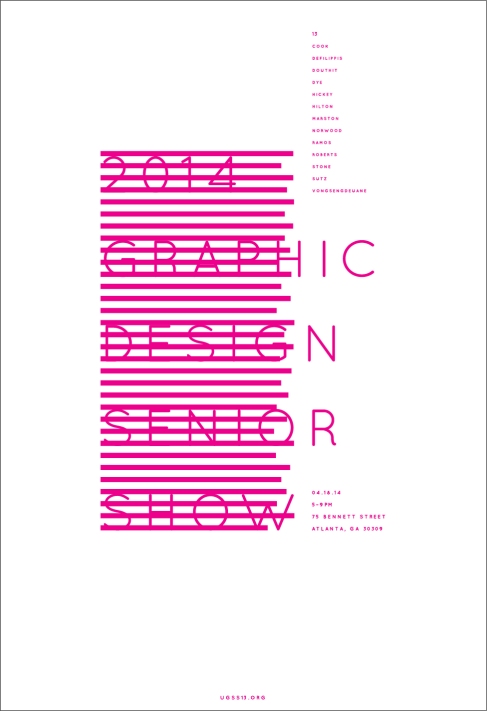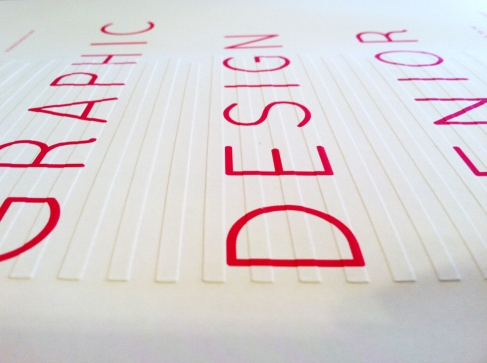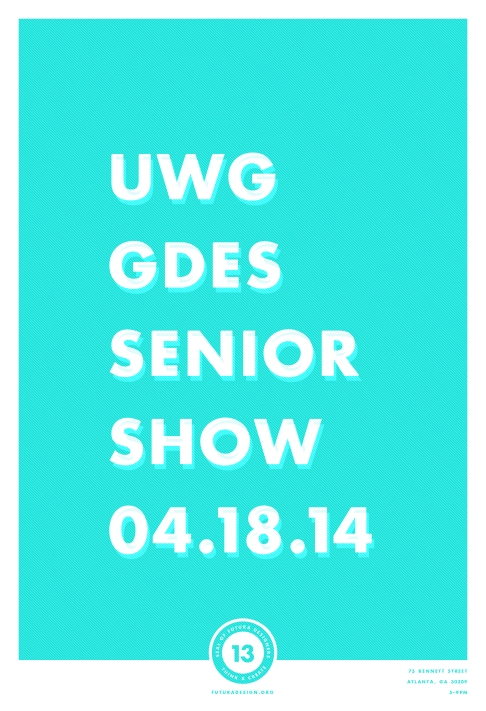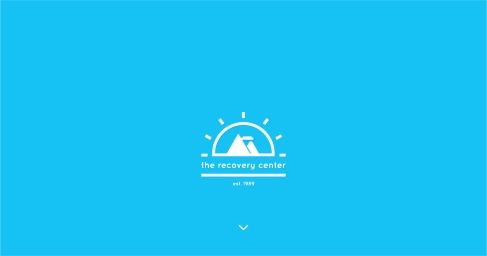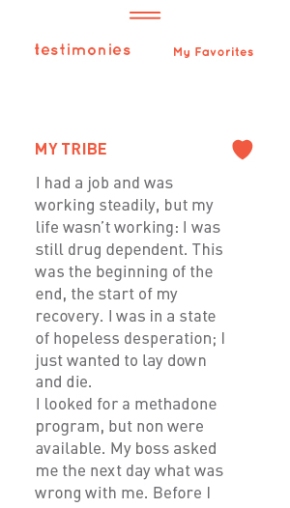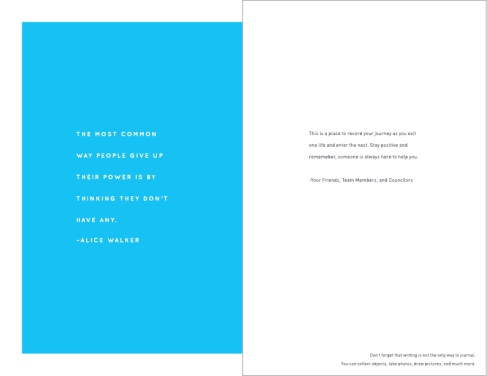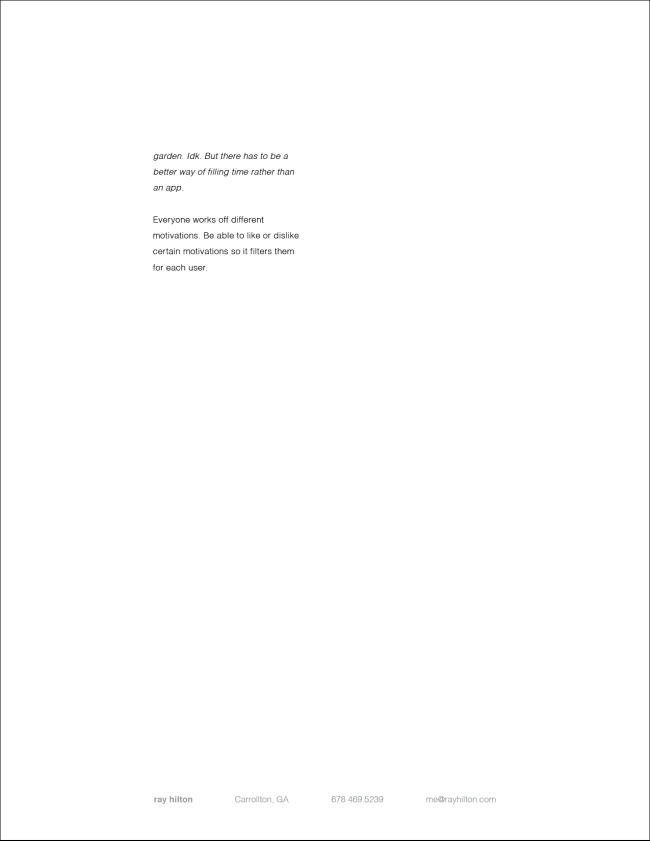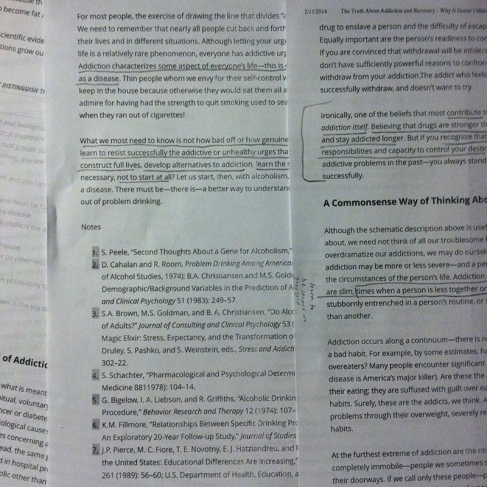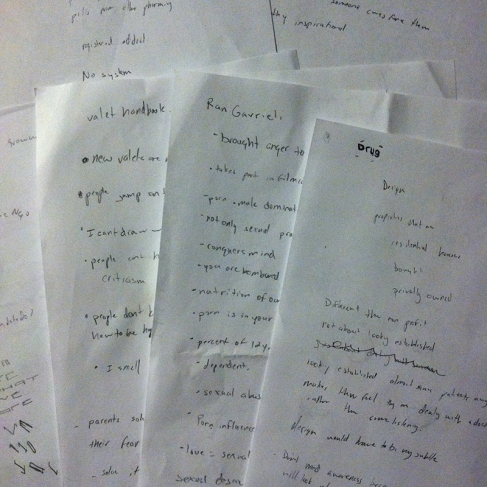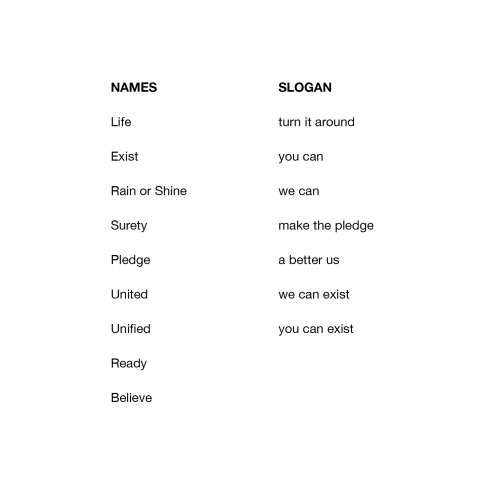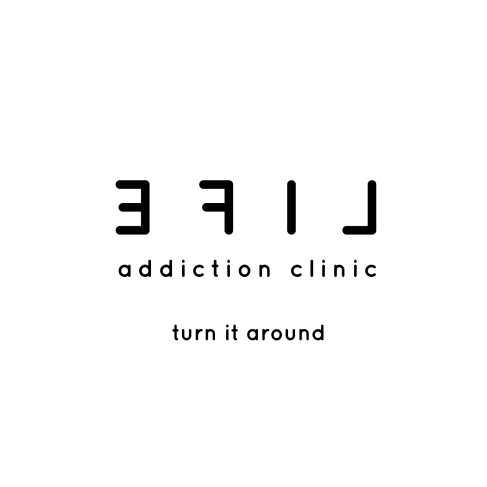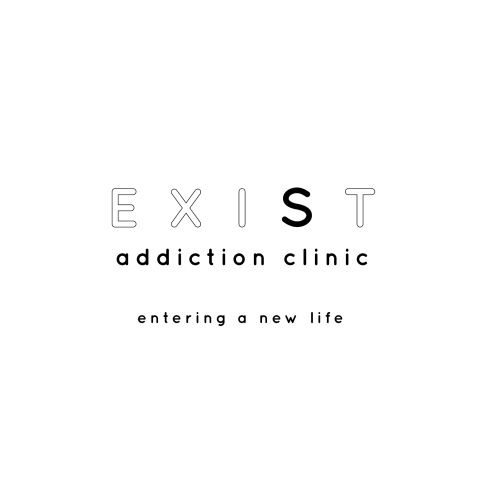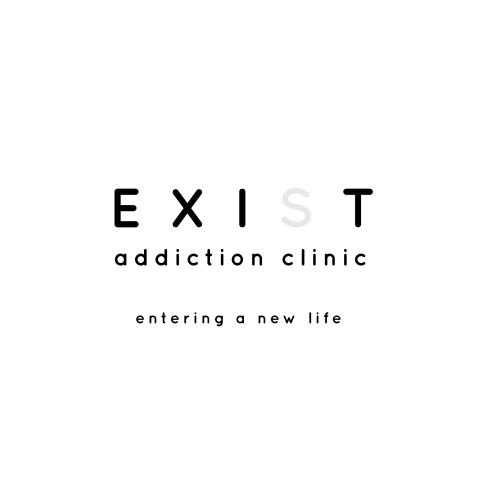REASON
I approached The Purpose Center due to their poorly designed identity, and their lack of tools keeping their students motivated and inspired to better themselves. After researching a wide range of rehab clinics, I came to find that only a few clinics had somewhat strong identity systems. However, even the stronger identities still felt very generic and overplayed. If executed properly, my thesis project will stand out among others while keeping with a subtle theme that is necessary in the rehabilitation world.
APPROACH/GOALS
After becoming more informed of The Purpose Center’s goals, talking to other councilors, and speaking with existing/preexisting drug users on forums and blogs, I narrowed my goals. Even though showing students how to exist without drugs is my main goal, improving the clinics identity will be my first goal. This is because a strong identity will give me guidelines when designing my deliverables. I will also be approaching other problems within the clinic such as—students feeling uninspired, uncared for, leave because they do not like the rules, and often relapse after leaving the clinic.
DELIVERABLES
IDENTITY—Once a new identity is created I will then implement it on business/appointment cards, notepads, lessons plans, t-shirts, posters, an app, and any other material I see fit. I have an appointment this Sunday to further discuss the life and routine of those going through rehabilitation.
JOURNAL—From my research so far, I know students enjoy having personal objects that they can keep close, such as a journal. The journal should include space for notes, how they feel, drawings, what keeps them motivated, inspiration messages, and is most importantly an outlet they can absorb rather than drugs. From talking with those on rehabilitation forums, the journal is the most important and personal object someone going through rehab can have.
HABIT BOOK—Also, since students are having trouble with the rules being presented to them, I think they should have the ability to establish some of their own rules. Maybe something that isn’t necessarily a rulebook but a better habit book.
CALENDAR—Past drug users know the exact day they went into rehab, so a calendar isn’t for keeping track of the day anymore. Because of this, the calendar could be another way to bring in inspiration rather than focusing how long they have been at the clinic
FACING EMOTIONS—Addicts are addicts for a reason. They normally use drugs instead of facing the fear, anger, anxiety, or depression they have. This is just another area they need to practice in to learn to exist in the real world. Everyone is different so they need to learn what works for them. A guide could include ways to express themselves through drawings, poetry, exercise, session of extrinsic and intrinsic thought, reading, planting a seed and helping it grow, and breathing exercises. There are also key words that they could learn to pick up on that may show them when they are being sad or mad without them realizing it.
Hopefully I will leave The Purpose Center with a stronger identity and the students better equipped towards turning their life around.
